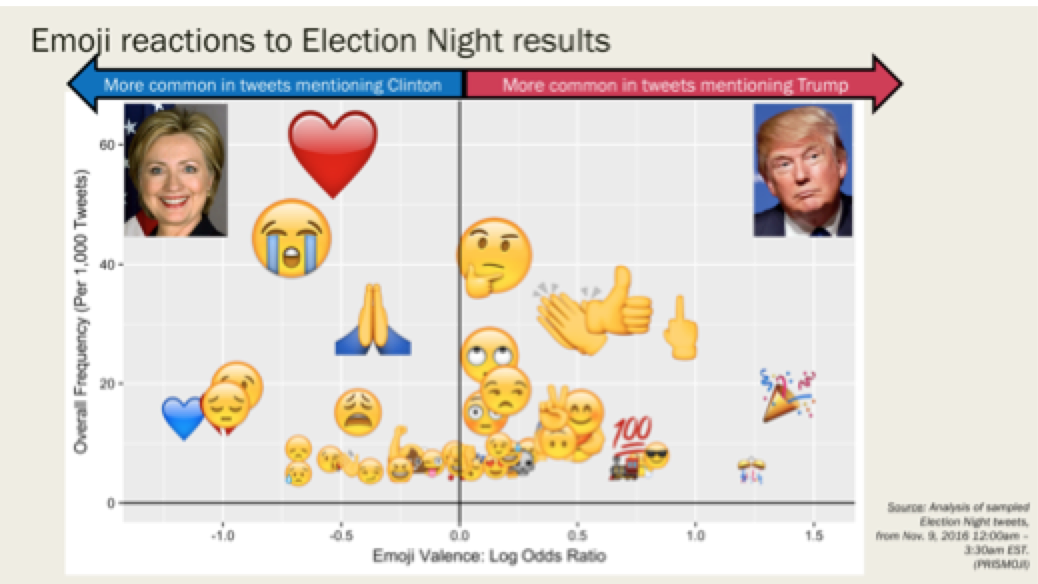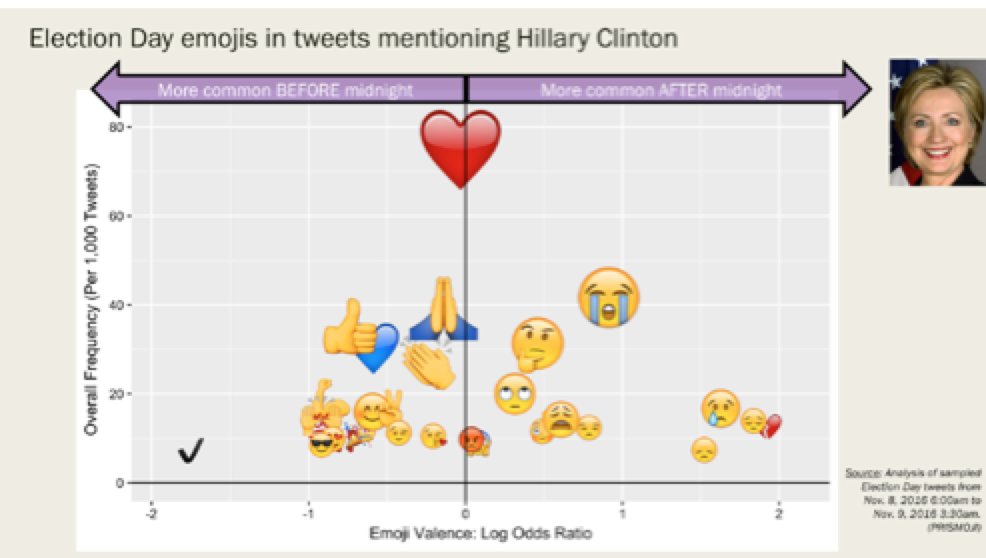This past Mother’s Day I received lots of flowers and love in text messages:
Happy Mother’s Day! I hope you are having a relaxing day ![]()
These short text messages made for a wonderful day. It is super easy to click an image button and insert a picture that conveys a lot of additional feeling. Just how many words are these emojis worth?
What is an emoji?
Emojis are ideaograms used in electronic messaging. They originated in Japan in the 1990s and are coded into many mobile devices for use in text messaging. Emojis are technically distinct from emoticons, which use punctuation marks, numbers, and letters to express feelings. Here is an emoticon smiley face, :), and sad face, :(. Emojis are true images, like this smiley face, ![]() .
.
Emoji originated from the idea of using symbols instead of words to convey thoughts and meaning. The inspiration for emoji development came from weather maps using symbols for rain and sun, and our history of using pictures as language. Before characters were strung together into words, hieroglyphics and Chinese characters conveyed complex meanings of emotion through pictures.
As pen and paper have been replaced with laptops and mobile devices with keyboards we have images literally at our fingertips. I wouldn’t take the time to draw a smiley face when I can write “happy” much more quickly, but images on my phone appear with one tap of my finger. In a world of abbreviations and acronyms that shorten everything, emojis fit right in. We might have this text exchange:
Me: How are you doing with MACRA? Will your MIPS TPS reflect your good work in ACI?
You: We are getting it done ![]() . We will be partying at the end of the year!
. We will be partying at the end of the year! ![]()
Emojis bring data
Social networks like Facebook, Twitter, Snapchat, and Instagram leverage emojis which are easy to use and convey universal emotions. Data scientists are using emojis from public social network sources to create data insights. Prismoji, a small New York-based data journalism lab, uses social network emojis to tell political, cultural, and technology stories. Prismoji champions open data science and journalism. In February, the group published details on downloading twitter data using R, ways to extract emojis from tweets, and methods for visualizing emoji data.
After the 2016 U.S. presidential election Prismoji data scientists used the Twitter application program interface (API) to collect data on more than 1.8 million election-night tweets. Prismoji reported that the most common emojis associated with tweets that included Hillary Clinton’s name were images of love and support. Donald Trump tweets were a mixture of celebration and anger. Here’s the data:
The following Prismoji image tells the twitter data story of Election Day for Clinton and Trump supporters before and after midnight:
This large twitter dataset yields images that express the complexity of the November election without words.
Emojis and health care data
Secure text messaging is becoming part of health care delivery and it is a source of health care data. The Advisory Board Company recently reported on use of data from a text-based crisis line to identify “high-risk” texters. The Crisis Text Line (CTL) is a 24/7 text support service staffed by trained, licensed counselors. It blends a technology delivery platform with traditional clinical service. Active listening and support occur through a secure texting platform. The service is free since the CTL is staffed by qualified, trained volunteers. CTL has found that there are times, particularly after a public crisis event, when there are long wait times for a counselor response, so they use text data and machine learning to prioritize “at-risk texters”. CTL data scientists have uncovered unexpected key works like “Advil” and other common drug names that are predictive of suicide risk. According to CTL data, the crying face emoticon is more predictive of suicide risk than the word “suicide”.
Send us your emoji
Is it lazy to use emojis or crazy to think about emoji health care data? Can emojis become part of our data insights along with infographics and visual abstracts? Do you use emojis to empress your true feelings? How do you feel about MACRA and MIPS? ![]() or
or ![]()
We want you to have less of this and more of this ![]() , so look for more MIPS tips from Diana and Terry in our Acumen blog.
, so look for more MIPS tips from Diana and Terry in our Acumen blog.
 Dugan Maddux, MD, FACP, is the Vice President for CKD Initiatives for FMC-NA. Before her foray into the business side of medicine, Dr. Maddux spent 18 years practicing nephrology in Danville, Virginia. During this time, she and her husband, Dr. Frank Maddux, developed a nephrology-focused Electronic Health Record. She and Frank also developed Voice Expeditions, which features the Nephrology Oral History project, a collection of interviews of the early dialysis pioneers.
Dugan Maddux, MD, FACP, is the Vice President for CKD Initiatives for FMC-NA. Before her foray into the business side of medicine, Dr. Maddux spent 18 years practicing nephrology in Danville, Virginia. During this time, she and her husband, Dr. Frank Maddux, developed a nephrology-focused Electronic Health Record. She and Frank also developed Voice Expeditions, which features the Nephrology Oral History project, a collection of interviews of the early dialysis pioneers.







Leave a Reply